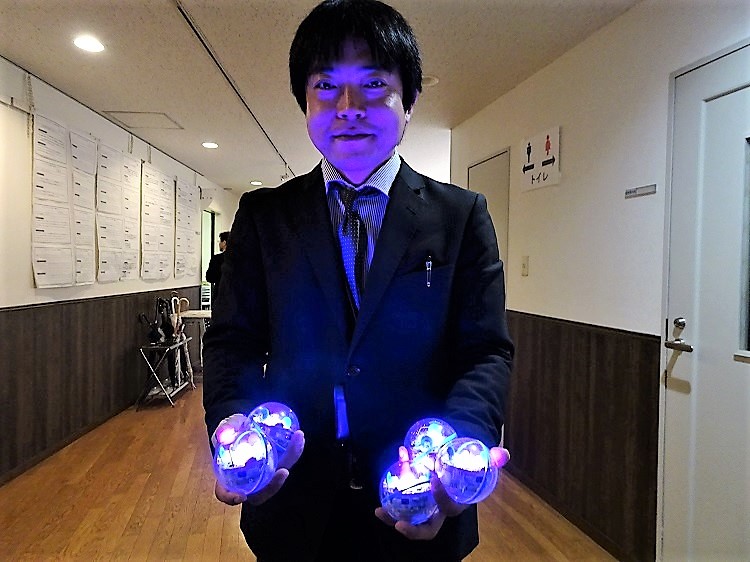
In general, the lessons consist of inputting and editing the information to recreate X as knowledge. However, at Mita International School, the lessons are about producing creativity. When you input X, a new concept, known as Y, is created. The important part isn’t about x→ x or x→ y, rather it is about the process ( → ) of discovery and creating it yourself.
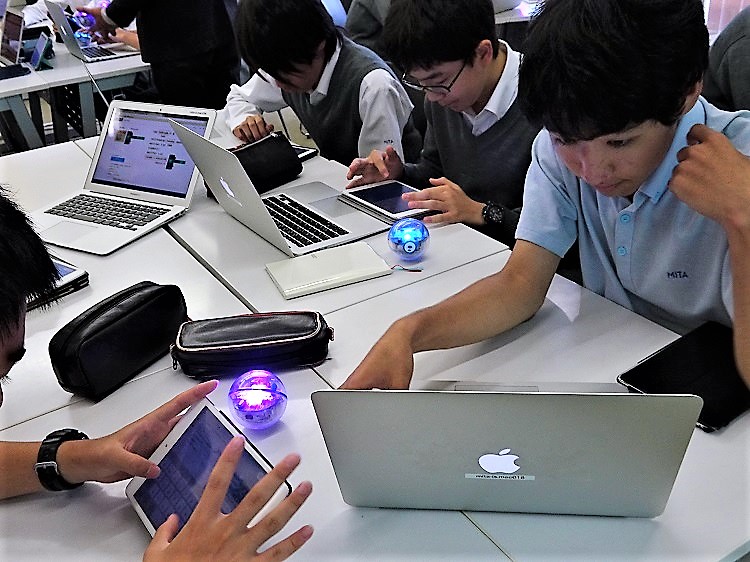
For example, even though you can use programming to manipulate Sphero’s rotational movements, there is more to the operation than just remembering the technical problems. For this reason, a creative mindset is necessary to learn programming and to be able to use it effectively.
In other words, having the thinking ability to create the function, y=f(x), yourself, is more important than only being able to explain what the function does.
When the Renaissance introduced modern science, the Alchemist (錬金術師) created equations by clarifying them to each other. They devised an equation to see the relationship of the function. The aim of this was to see how to make human civilization and culture by using information that flows naturally.
Newton was respected as one of the Fathers of modern science, but an Alchemist had a stronger image at that time. That said, Mita International isn’t exactly Mr. Yoichi Ochiai, but it wouldn’t be an exaggeration to say that it is now a school that makes miracles happen.
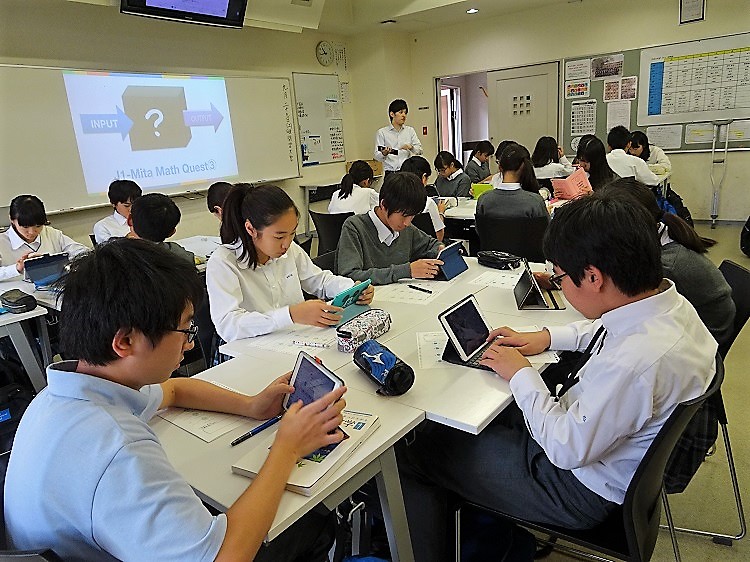
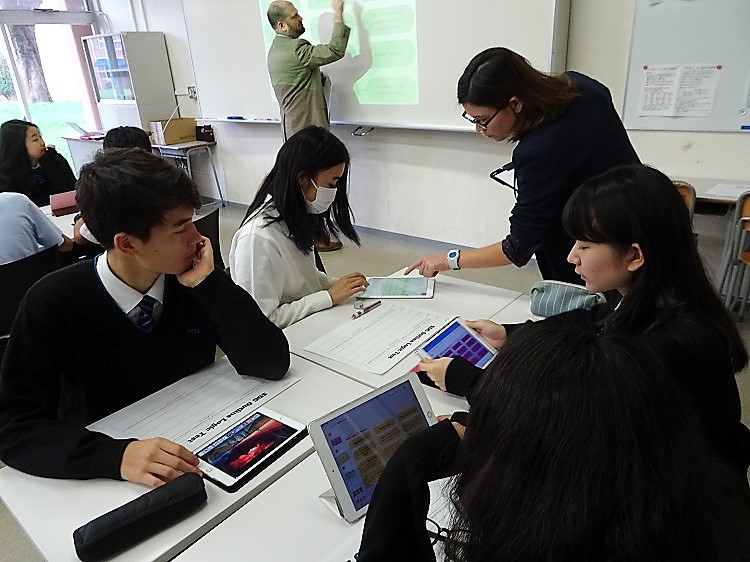
In the international class, we think about the Sustainable Development Goals (SDGs) by taking part in English discussions about the action that can be taken to improve various issues across the world. The ideal input of the function would be the information about global issues. The ideal output would be, what it means to truly be happy, which is the ultimate goal of life. Even if we could do this, it is important to know how to make the equation because there is a trick to implement to achieve the ultimate goal of happiness.
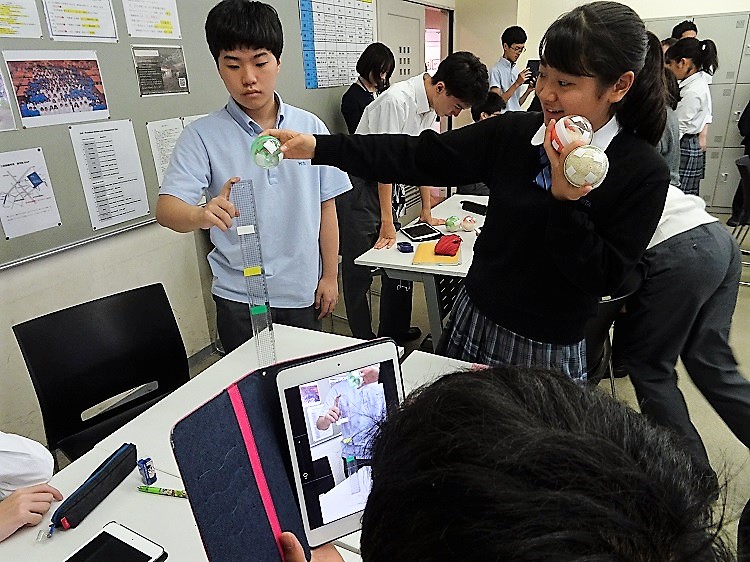
In the science lessons, they were experimenting to verify whether they could answer the trigger question, which was, what can be done to stop a bouncy object from bouncing. They continued with the experiment by using the same cylinder and just changing the conditions by filling the cylinder to the top. They created a video for monitoring purposes to record the outcome so that they could support their hypothesis during the presentation.
The results of y=f(x) are different because this lesson uses different materials to input various conditions to unravel the equation.
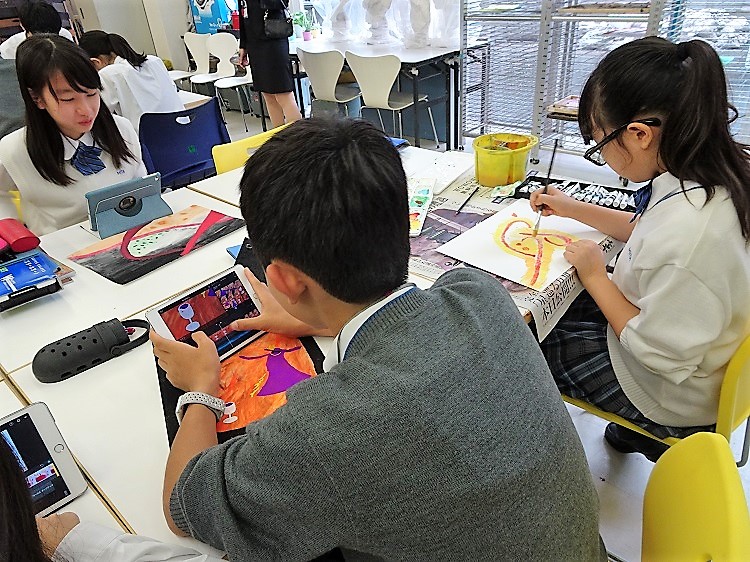
In the art lesson, you could see what kind of image was being expressed when you input certain music. However, it wasn’t finished yet. The app was used to capture the images, which were then combined with music and movements. This made you think about the emotions you feel and ideas you imagine when you hear the music. It made you wonder how moving images are expressed in movies.
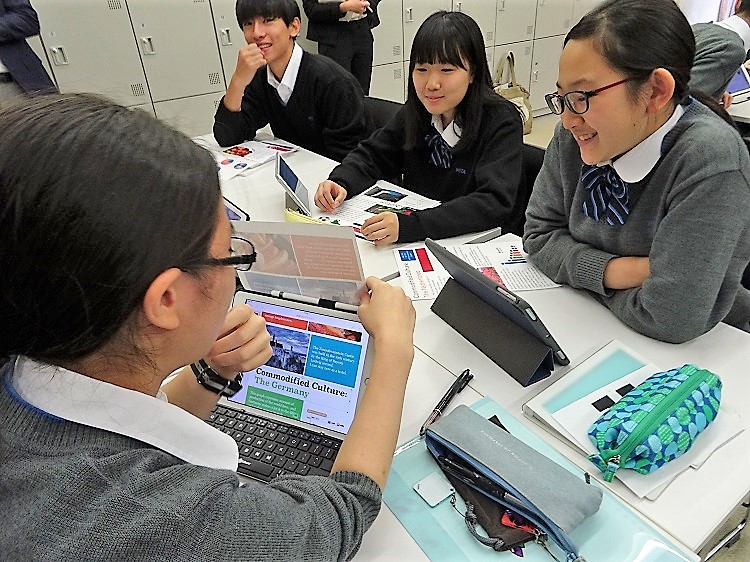
In the English lessons of the medical science technology (MST) class, the students worked in teams to research information about each country. They expressed their thoughts which they shared with each other during the discussions.
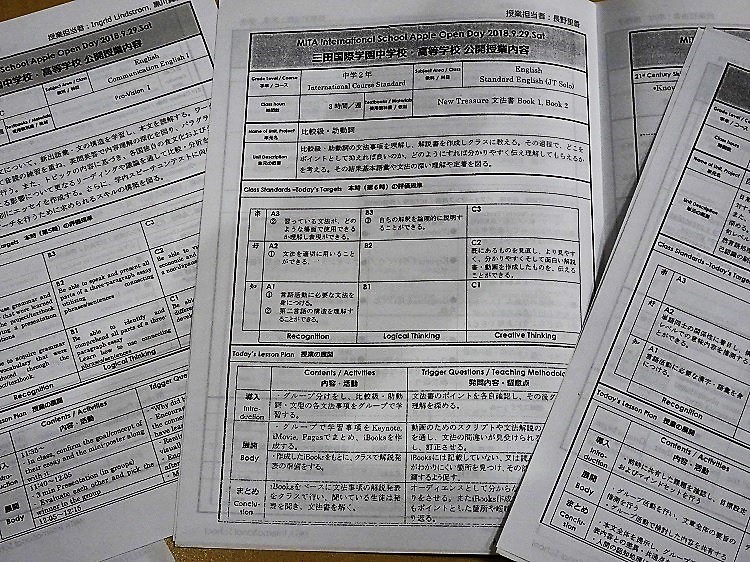

If you walked by the laboratory during break time, you could see the students in the MST class doing experiments. If you asked them what they were doing, they said they were experimenting to see whether they could find genes from places nearby, that could be useful for antibiotics in the future. To do this they analyzed the genetics of plants, which they collected from inside the school and from parks close to the school.
They politely explained the research method that they used in the genetics experiment but it was difficult to understand because it was too technical. The School Director, Kiyomichi Ohashi, had already informed us that the MST class is graded using the curriculum from the Advanced Placement (AP) program in America. From this, we understood that the students were experimenting at or above undergraduate level, which is truly amazing.
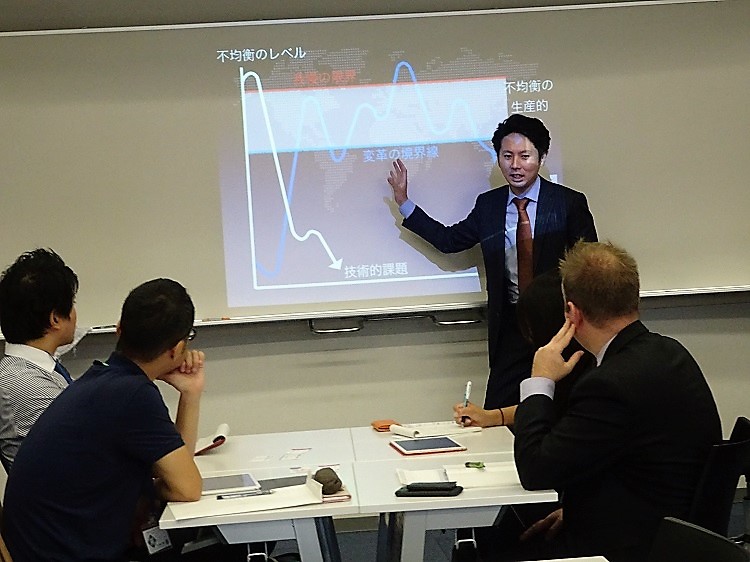
The last part of the Open Day was the subcommittee meeting. This was so that the teachers that participated could reflect on the lessons that they enjoyed the most. Within this meeting, Headteacher Jun Tanaka discussed with the participants about the definite possibility of all teachers and all students using iTunesU to create new lessons.
Under these circumstances, this School of Miracles is able to create lessons and a curriculum to create y=f(x). For this to happen, the theory of organizational management needs to be shared throughout the entire school and the actual method of sharing needs to be considered. It isn’t possible to only create x or to only create y because there isn’t a cultural capital of this new type of learning. Cultural capital is a term used in sociology that refers to the social assets an individual possesses, such as education, intellect, and style), which contribute to social mobility within the overall society. To become a culture, there needs to be the possibility of becoming sustainable.